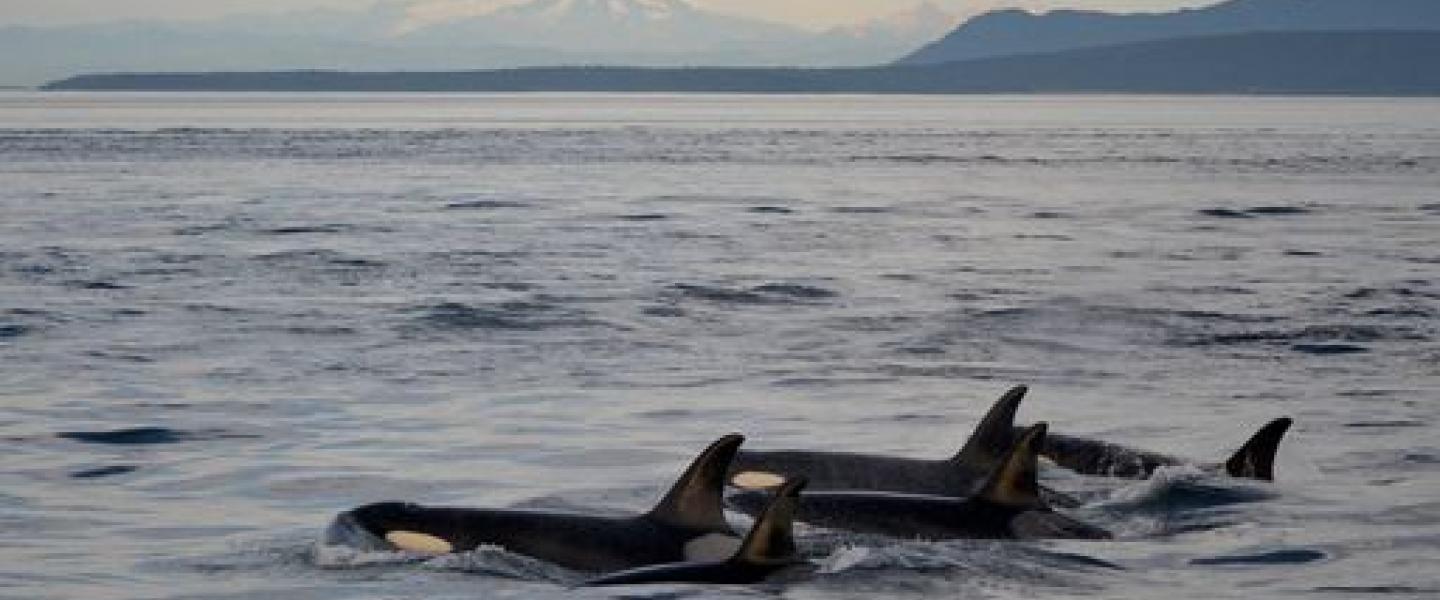
Olivia | M/V Sea Lion | July 8th, 2020 | 13:30
The most fin-tastic trip yet! It was such a great day out on the water, I am still shaking with excitement! We headed towards the western side of Cypress Island to follow rumors of Bigg’s Killer Whales milling in the area. When we arrived on scene, sure enough, there were TWO families of transient orcas swimming around together, comprising of around 11 individuals! These were the T36’s and T37’s, happily reuniting for the day. They were seemingly picturesque as they played, rolled around, and silhouetted against the Pacific Northwest sunshine.
Unexpectedly, another surprise family group of Bigg’s Killer Whales (thought to be the T34’s) lunged through the water on the opposite side of our boat traveling south in the opposite direction. We decided to investigate this mystery group and see what they were up to as our sister boat, Kestrel, took their time admiring the group of 12 we were formerly watching. As we followed them TWO MORE family groups of orca appeared swimming through the sunshine. BUT WAIT!! These were SOUTHERN RESIDENT KILLER WHALES! **Cue the whaley intense emotions blubbering through my Naturalist rants. This was utterly remarkable.
Not only was it whale soup with transient orca unexpectedly appearing all over the place, but now the J19’s and J17’s of our critically endangered ecotype were present. I had been telling the boat all about their depleting numbers with a continual lack of salmon and how few and far between their visits are, and now here they were seemingly out of nowhere. Having diverse ecotypes means they differ in a multitude of ways. That could be physical appearance, diet, family structure, hunting methods, distribution, genetics, social groups/hierarchy, and language. Historically, when the transient orcas would come into resident orca territory, they would see one another coming (using echolocation) and head in the opposite directions. Additionally, as the Southern Resident Killer Whales were here almost daily, there were fewer Bigg’s Killer Whales in the area. Currently though, those transient orca are around most days of the week feeding on marine mammals, and the resident orca are only here a handful of times in a year as they are searching way out of their home range for salmon.
Today was unlike anything we have seen. Not only were the Southern Resident Killer Whales within 100 yards from the Bigg’s Killer Whales, it appeared as if the large J Pod females were charging in that same direct path, causing the transients to hurry up and scurry inland away from them. Was this a deeply seeded social dispute? Do the transients fear the residents? Do the transients often assume the entire pod is around, way out numbering the small numbers of their family groups? Do the transients still view this as resident territory? Is J19 the new ‘Granny’ boldly not backing down on what was once theirs despite the different food, hunting pattern, and foraging areas?
We could ask a million questions wondering about the social hierarchy, territory of the two ecotypes, potentially an emotional stance, but we will never know. What we do know, is that the Salish Sea is changing from what it once used to be and it will forever be an emotional, exciting, heartbreaking, and unexpected adventure. Most importantly, full of hope as we try our best to document these changing behaviors, educate people from around the world on our shifting environment, as well as the world, and spread awareness on what we can do to play our part in it all.